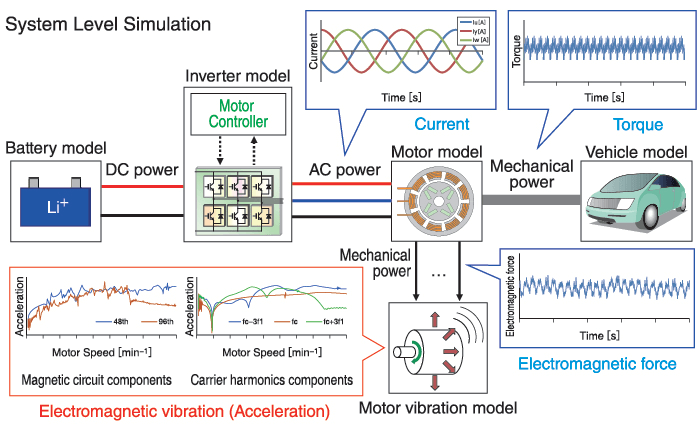 Open Access
Open Access
ARTICLE
Simulation Analysis of New Energy Vehicle Engine Cooling System Based on K-E Turbulent Flow Mathematical Model
1 College of Power and Energy Engineering, Harbin Engineering University, Harbin, 150001, China
2 Extended Range Power System Research Institute, Harbin Dongan Auto Engine Co., Ltd., Harbin, 150000, China
* Corresponding Author: Hongyu Mu. Email:
Energy Engineering 2023, 120(10), 2325-2342. https://doi.org/10.32604/ee.2023.029360
Received 14 February 2023; Accepted 27 April 2023; Issue published 28 September 2023
Abstract
New energy vehicles have better clean and environmental protection characteristics than traditional fuel vehicles. The new energy engine cooling technology is critical in the design of new energy vehicles. This paper used one-and three-way joint simulation methods to simulate the refrigeration system of new energy vehicles. Firstly, a k-ε turbulent flow model for the cooling pump flow field is established based on the principle of computational fluid dynamics. Then, the CFD commercial fluid analysis software FLUENT is used to simulate the flow field of the cooling pump under different inlet flow conditions. This paper proposes an optimization scheme for new energy vehicle engines’ “boiling” phenomenon under high temperatures and long-time climbing conditions. The simulation results show that changing the radiator’s structure and adjusting the thermostat’s parameters can solve the problem of a “boiling pot.” The optimized new energy vehicle engine can maintain a better operating temperature range. The algorithm model can reference each cryogenic system component hardware selection and control strategy in the new energy vehicle’s engine.Graphic Abstract

Keywords
Cite This Article
 Copyright © 2023 The Author(s). Published by Tech Science Press.
Copyright © 2023 The Author(s). Published by Tech Science Press.This work is licensed under a Creative Commons Attribution 4.0 International License , which permits unrestricted use, distribution, and reproduction in any medium, provided the original work is properly cited.


 Submit a Paper
Submit a Paper Propose a Special lssue
Propose a Special lssue View Full Text
View Full Text Download PDF
Download PDF Downloads
Downloads
 Citation Tools
Citation Tools